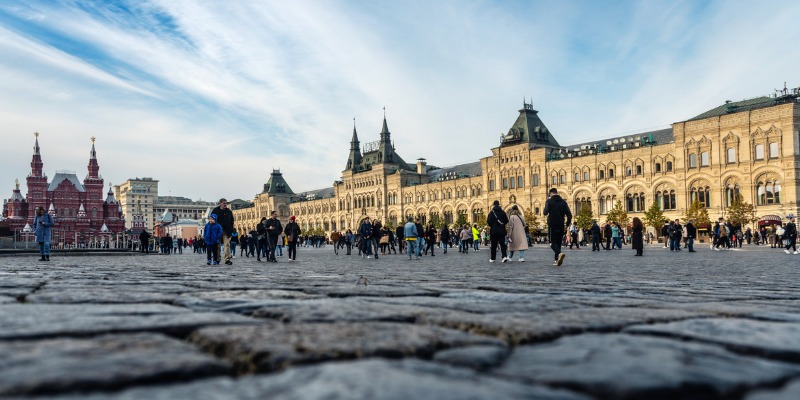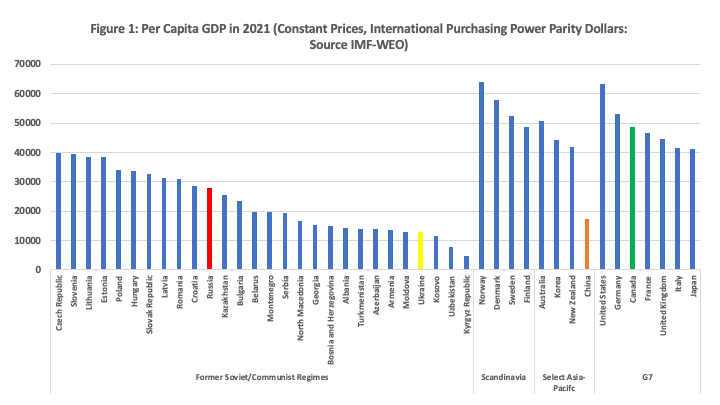Russia and its former satellites lag behind rest of Europe on per-capita GDP

Russia’s invasion of Ukraine and the economic sanctions imposed by the West in response has underscored the current state of the Russian economy. After the Cold War, Russia enacted market-based reforms that transformed much of its economy and it became more integrated into the global economic order. With abundant natural resources and a well-educated population, Russia made enormous economic strides over the last few decades and generated substantial wealth—especially for its economic elites.
Unfortunately, the legacy of decades of communist rule, and the growth of corruption in its economy during its transition after the fall of the Berlin Wall, have hampered Russia’s full economic potential. Indeed, the entire former Soviet bloc has had a somewhat mixed performance in terms of economic growth over the last few decades. As a result, per-capita GDP levels in many of these countries remain well below many other European countries and certainly those of the G7.
The chart below plots per-capita GDP in 2021 in international purchasing power parity dollars as obtained from the International Monetary Fund World Economic Outlook database for assorted former Soviet bloc satellites and constituent republics along with the G7, the four Scandinavian countries and select Asia-Pacific countries.

The highest per-capita GDP of these former eastern bloc countries now belongs to the Czech Republic followed by Slovenia, Lithuania and Estonia. These four countries now have a level of per-capita GDP pretty much on par with New Zealand or Italy or Japan and within striking distance of Korea or the United Kingdom.
Given the proximity of the former Baltic republics of Lithuania and Estonia to the Scandinavian countries, one wonders how they would have fared economically after 1945 in a counterfactual universe where they did not fall under Soviet rule. One expects that even without the bounty of Norwegian oil, they would have been quite close to Sweden or Finland in terms of economic performance. Next come Poland, Hungary, the Slovak Republic and Latvia (another Baltic republic), which also all have quite high levels of per-capita GDP relative to the rest of the former Soviet bloc.
In the end, Russia has not done as well as many of its former satellites on per-capita GDP. And except for the top four countries, most for bloc countries still have a way to go before they achieve per-capita output levels on par with western Europe and the G7. In the end, institutions matter, and institutional effects can persist as is the case with the legacy of communism and central planning in the former Soviet bloc countries and China, which incidentally has a per-capita GDP that fits into the bottom half of the former Soviet bloc countries.
The legacy of communist rule and the absence of a tradition of market-based economic incentives in Russia, combined with the growth of corruption over the last 30 years, have hampered the development of Russian economic potential. And while Russia has generated numerous wealthy oligarchs and businesspeople since 1990, their presence in an environment of low real per-capita incomes means there’s a great deal of income inequality.
In the end, Russia has an economy that despite its international bluster and bravado is weaker than you think. The impact of COVID, war and now western economic sanctions and the flight of foreign companies threaten to reverse the economic progress of the last few decades.

